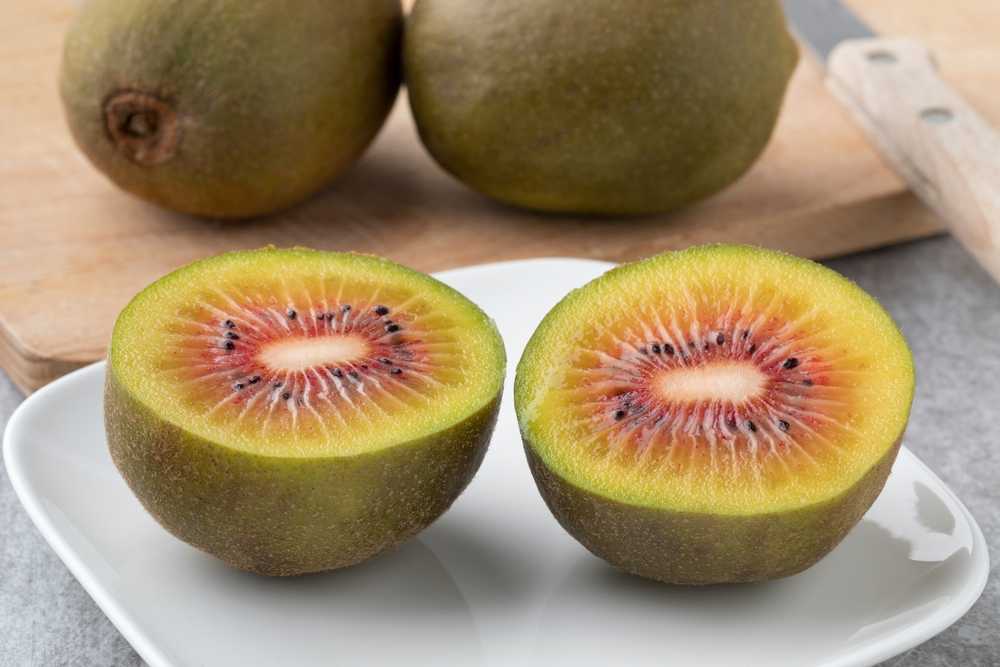From Tart to Dessert: Debunking What Do Kiwis Taste Like
Wiki Article
A Deep Study Kiwi Farming: Unveiling the Techniques, Difficulties, and Possible for Lasting Farming
In this short article, we will take you on a deep dive into the techniques, challenges, and potential for sustainable farming in the world of kiwis. Discover the ideal expanding problems, advanced farming techniques, and the lasting techniques that can unlock the full capacity of kiwi farming.Optimum Growing Conditions for Kiwi Plant Kingdoms

Cutting-Edge Cultivation Strategies
General practitioner technology permits for specific mapping and monitoring of the kiwi vines, maximizing watering and fertilization techniques to make sure that each plant gets the essential nutrients and water. One more cutting-edge technique is upright farming, which includes expanding kiwi plants in stacked layers utilizing man-made lights and climate-controlled environments. By embracing these advanced strategies, kiwi farmers can attain better efficiency, enhance resource usage, and contribute to lasting farming practices.Obstacles Dealt With by Kiwi Farmers
Facing numerous obstacles, kiwi farmers need to browse through different barriers to guarantee effective cultivation and lasting farming techniques. One of the major challenges they encounter is environment irregularity. Kiwi plants call for a certain environment to grow, with warm summer seasons and trendy winter seasons. Unpredictable weather patterns, such as severe temperatures, frost, and drought, can disrupt the growth and development of kiwi plants. Farmers should continuously monitor weather report and carry out methods like watering, frost defense, and color towel to reduce the negative effects of environment irregularity.Another considerable challenge for kiwi farmers is diseases and bugs. Kiwi creeping plants are prone to a variety of pests, consisting of termites, aphids, and thrips, which can damage the leaves and fruit. In addition, illness like Psa (Pseudomonas syringae pv. actinidiae) and botrytis can significantly impact kiwi production. Farmers should utilize incorporated insect monitoring techniques, such as routine monitoring, biological control approaches, and correct sanitation, to prevent and manage parasite and disease episodes.
Kiwi growing requires labor-intensive tasks, such as pruning, trellising, and harvesting. Discovering knowledgeable workers that are knowledgeable concerning kiwi farming techniques can be challenging.
Lasting Farming Practices for Kiwi Farming

To ensure sustainable kiwi growing, you can carry out an array of methods that promote ecological stewardship and lasting viability of your ranch. Kiwi plants call for a substantial quantity of water, yet too much irrigation can lead to water waste and dirt erosion. Embracing sustainable power methods, such as utilizing solar power or investing in energy-efficient innovations, can decrease your ranch's carbon footprint and contribute to an extra sustainable kiwi cultivation system.
Unlocking the Prospective of Kiwi Farming
By implementing lasting site link farming practices, you can unlock the complete capacity of kiwi farming while lessening environmental effect. Kiwi farming has immense potential for growth and profitability, however it likewise includes its very own set of challenges. To totally unlock this possibility, it is critical to adopt sustainable strategies that not only optimize return and top quality however likewise make sure long-lasting viability.One trick aspect of unlocking the potential of kiwi farming is optimizing irrigation methods - what do kiwis taste like. Kiwi plants need a certain quantity of water to flourish, and by utilizing efficient irrigation systems such as drip watering or accuracy lawn sprinklers, you can lessen water wastefulness and reduce the risk of waterlogging or soil disintegration
One more vital variable is dirt health and wellness administration. Fertile view publisher site and healthy and balanced soil is vital for the growth and development of kiwi plants. By executing practices such as cover chopping, plant rotation, and natural fertilizing, you can enhance soil structure, enhance nutrient accessibility, and reduce the requirement for chemical inputs.
Moreover, integrated parasite monitoring (IPM) techniques are essential in opening the potential of kiwi farming. By adopting IPM methods such as biological insect control, scent catches, and plant surveillance, you can properly manage insects and diseases while reducing using chemical pesticides.
Final Thought
In conclusion, kiwi growing holds great prospective for sustainable farming methods. With optimum growing problems and an emphasis on sustainable methods, kiwi farming can prosper while lessening ecological influence.Discover the optimum expanding problems, innovative cultivation methods, and the sustainable weblink methods that can open the complete possibility of kiwi farming. By accepting these advanced strategies, kiwi farmers can achieve better performance, optimize source utilization, and contribute to lasting farming methods.
Facing many challenges, kiwi farmers should browse through numerous obstacles to make sure effective farming and lasting farming practices.By executing lasting farming techniques, you can open the complete possibility of kiwi farming while decreasing environmental impact.In conclusion, kiwi growing holds fantastic prospective for lasting farming techniques.
Report this wiki page